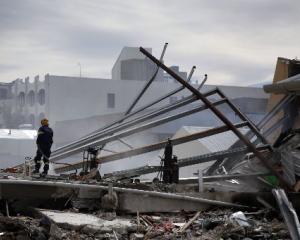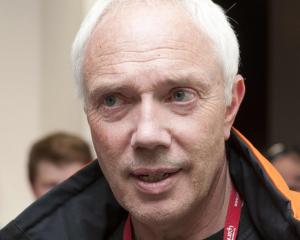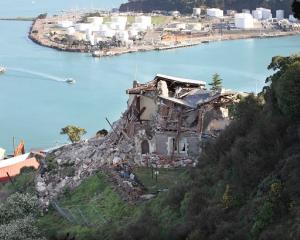Experts say the risk of more large earthquakes in the Christchurch region has risen with recent seismic activity, but there is optimism the quakes are moving away from the populated areas.
Earthquake experts from GNS Science will join geotechnical engineers in briefing city leaders on the most up-to-date information at a meeting today.
Residents are on edge again and demanding more information after a series of strong quakes since just before Christmas caused new damage.
A magnitude 4.8 aftershock rattled Christchurch yesterday morning.
GNS earthquake scientist Dr Kelvin Berryman said the latest projections were still being calculated, and fresh numbers would not be available at the meeting. Experts would try instead to provide "context" to recent events.
Last month, GNS put the risk of a quake of a magnitude 5.5 to 5.9 quake in the next year at 50-50, and the risk of a magnitude 6-plus quake at 10% to 15%.
Christchurch was hit by a magnitude 6 quake on December 23.
"There's a feeling of course that by having this [recent] cluster, then it will kick some of the numbers up as well," Dr Berryman said.
"The likelihood of further earthquakes in the short term has probably increased because of this rejuvenation ... That means that there is still quite a lot of stress around [in quake faults]." Though the risk of a quake bigger than magnitude 7 would also have risen, "the large earthquake probabilities are always going to be really small", Dr Berryman said.
"While we are learning more, the forecast in terms of what's going to happen - where and when and how big - is the crystal ball-gazing stuff." The trend of the most recent quakes has been offshore to the east of Christchurch, with experts thinking much of the stress in faults beneath the city has already been released.
The risk of tsunamis is still seen as low.
"It is possible, hopefully probable, that the earthquakes are moving further away from Christchurch," Dr Berryman said.
"If you're a Christchurch city-based person, then even if the numbers go up ... the way you are going to experience earthquakes over the next year is less."
However, earthquake scientists and Christchurch Mayor Bob Parker are expected to come under scrutiny today over why it is taking so long to get a tsunami warning system in place along the city's coastline.
Scientists say two big faultlines lying offshore at Brooklands and Woodend could generate up to a magnitude 7 quake - but they do not know enough about them to say if they could produce a tsunami.
The city council has toyed with putting in sirens to warn of a tsunami since the 2006 Boxing Day tsunami in Asia, with the latest plan for a system covering Pegasus Bay and Banks Peninsula costing $1.5 million.
The Hurunui District Council has already put in a siren warning system at Amberley and Leithfield beaches for just $20,000.
New Brighton Residents' Association chairman Steve Burke has questioned why the city council had not acted on a warning system.
"It's been budgeted for and put in place, so where is it?
"If Hurunui Council can do it, then why the hell can't we? It's not hard, and not expensive. Why make it so difficult? Let's just do it." Mr Parker said the system was in the pipeline and remained a "priority."
- The New Zealand Herald/APNZ






